Download the report here
Methods
Estimates provided in this report are based on statistical models which take into account effects at the client level, seasonality, and age effects. Only users sharing data with Huvepharma(R) were included. The age range was restricted between 7 and 42 days of age. In addition, users needed to have entered at least 10 flocks in the last 2 years.
Number of observations
In Table 1, an overview is given of the number of birds and flocks included in this report.

Discussion
The main different noticed in 2022 compared to 2021 is the lower level of E. maxima scores. This is most clearly demonstrated in Figure 4 showing the average lesion score for E. maxima as a function of the age of the birds. The other two species (E. acervulina and E. tenella) have almost identical scores over the two years, E. acervulina being the most dominant species and E. tenella having very low scores in general. In December 2021, both the TMLS (total mean lesion score) and the dysbacteriosis score was low and increased during the first 6 months of 2022. In general, the TMLS was very similar in 2021 and 2022, but the dysbacteriosis score increased in 2022 (0.64 versus 0.58).
Trends in E. acervulina
Figures 1, 2 and 3 demonstrate the evolution of E. acervulina over time comparing 2021 with 2022. In general there was little variation between 2021 and 2022 for E. acervulina as scores proved to be stable.
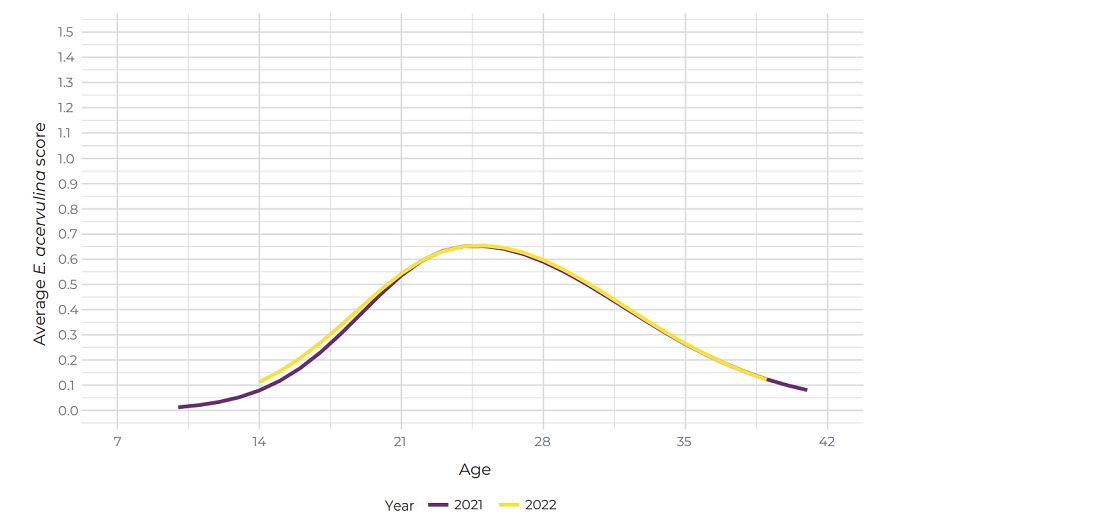
There is very little difference between the age profile in 2021 and 2022. The average peak scores (0.65 and 0,66 for 2021 and 2022, respectively) were very similar at 25 days of age for both years.
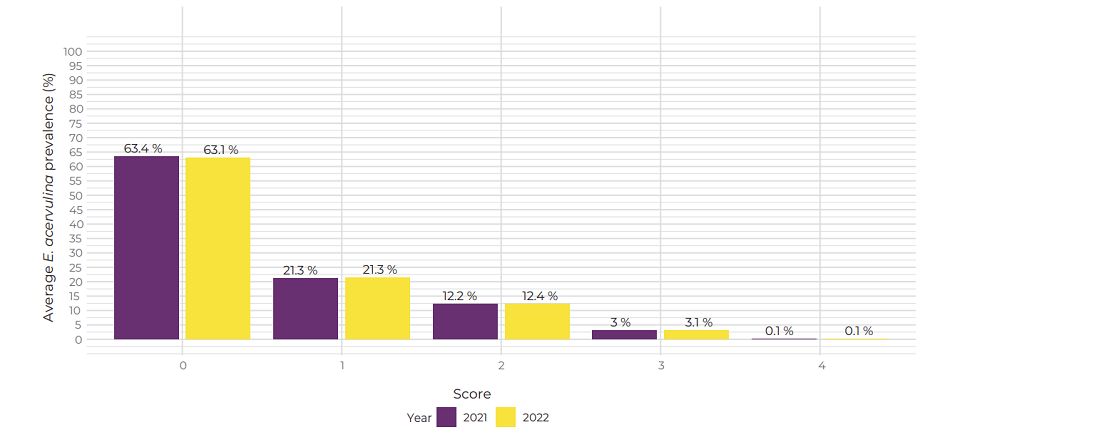
The distribution of the different scores shows very little difference in 2022 compared with 2021.
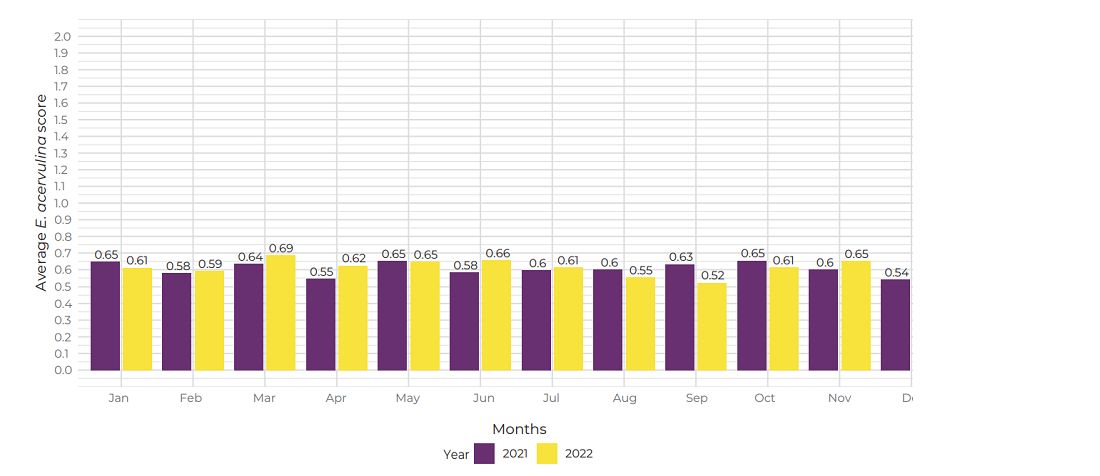
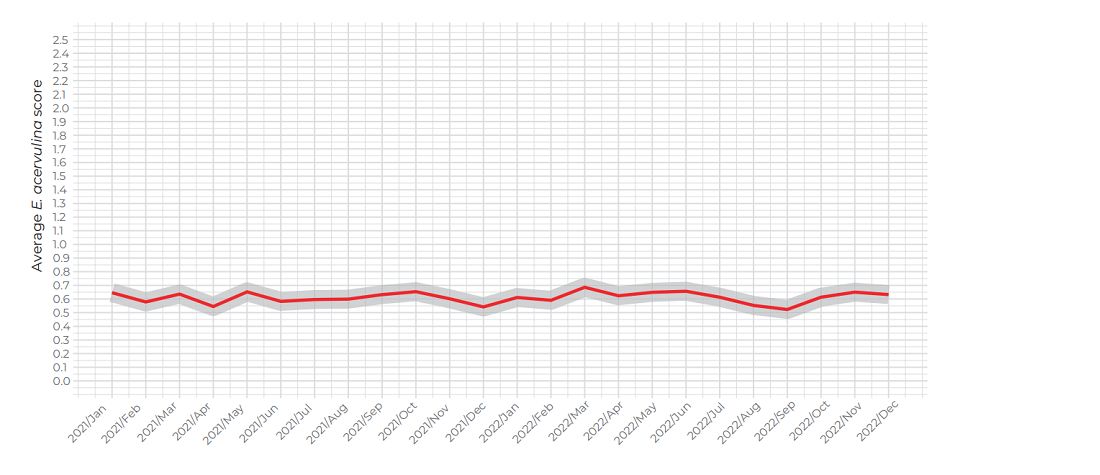
After a slight reduction at the end of 2021, the average E. acervulina score increased again. The scores in 2022 showed slightly more variation compared to 2021.
Trends in E. maxima
Figures 4, 5 and 6 demonstrate the evolution of E. maxima over time comparing 2021 with 2022. In general there was a reduction of E. maxima lesions at the end of 2022.
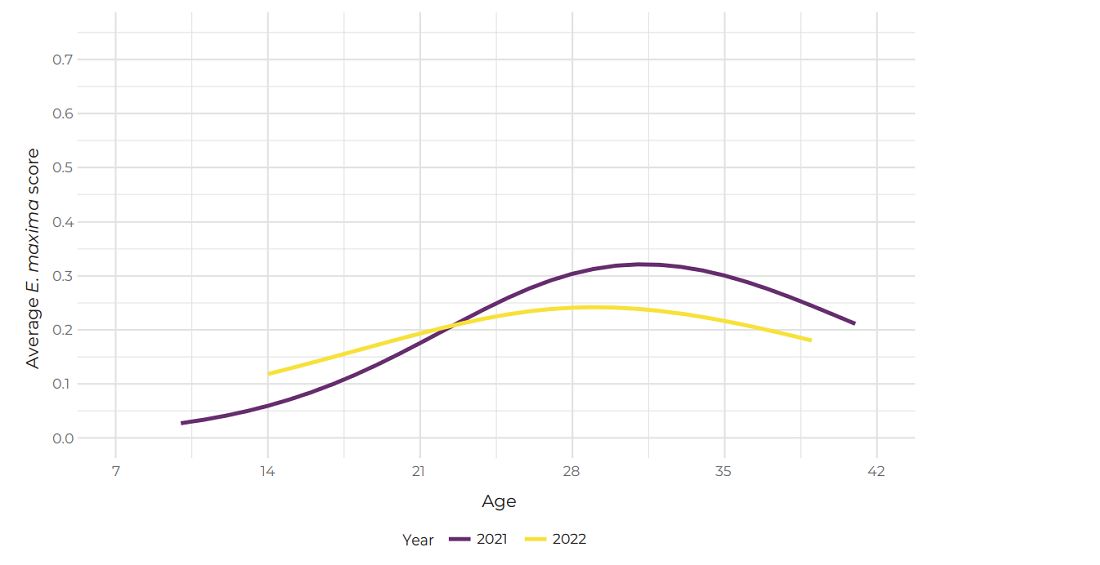
The E. maxima age profile was notably lower in 2022 compared to 2021. The average peak score was slightly earlier in 2022 at 29 days of age (average score = 0.24) compared to 2021 which peaked at 31 days of age (average score = 0.32).
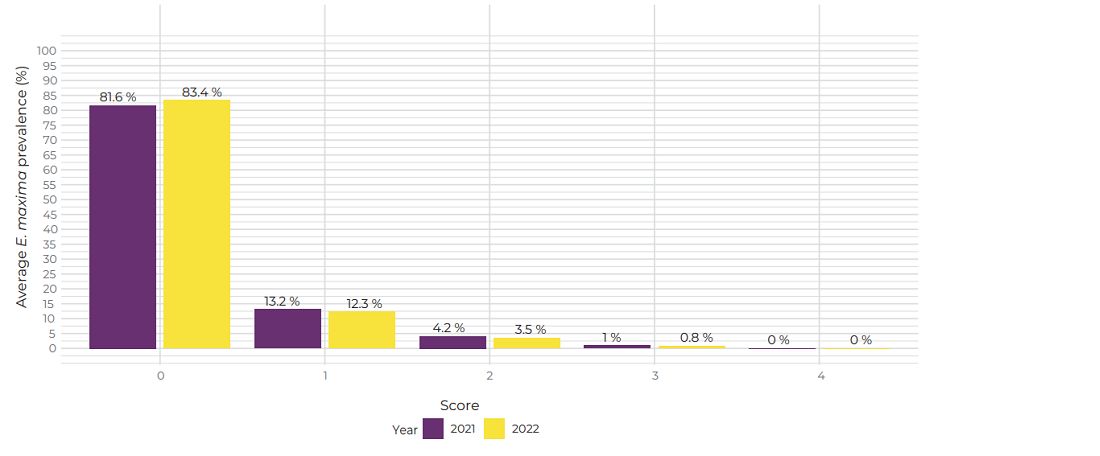
There was a higher percentage of 0 scores with an even reduction of the different scores 1 to 3.

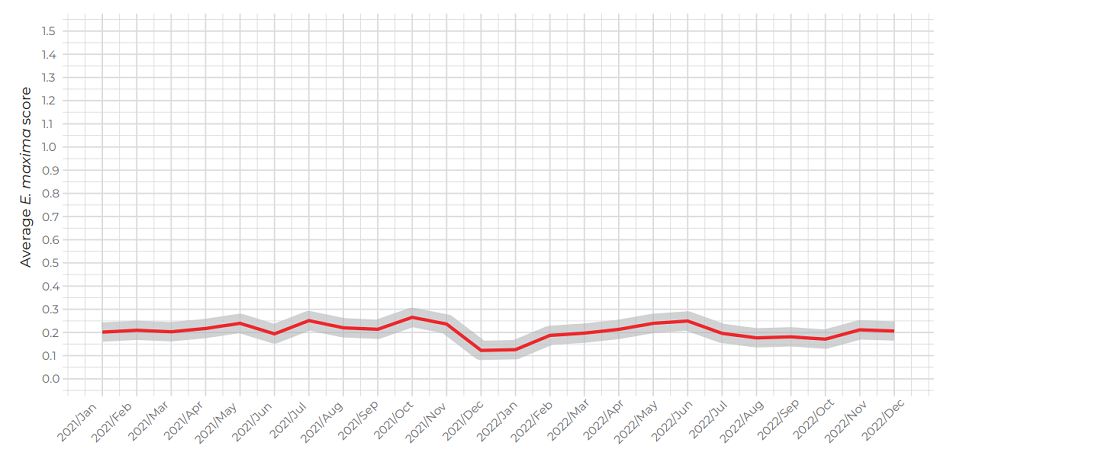
The monthly average scores in the second half of 2022 were lower compared with 2021.
In 2021, a strong reduction in the average E. maxima score was seen in contrast to 2022 where an increase at the end of the year was observed.
Trends in E. tenella
Figures 7, 8 and 9 demonstrate the evolution of E. tenella over time comparing 2021 with 2022. In general there was little variation between 2021 and 2022 for E. tenella as scores proved to be stable.
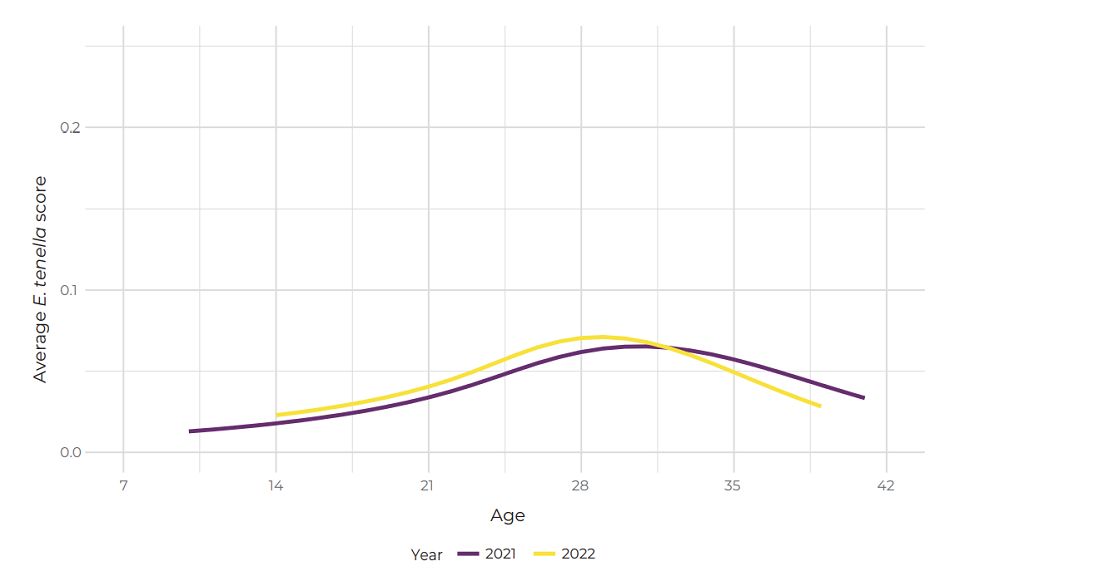
In 2022, the E. tenella age profile showed higher scores at earlier ages, but lower scores in older diets.
The average peak score was slightly earlier in 2022 at 29 days of age (average score = 0.07) compared to 2021 at 31 days of age (average score = 0.065).
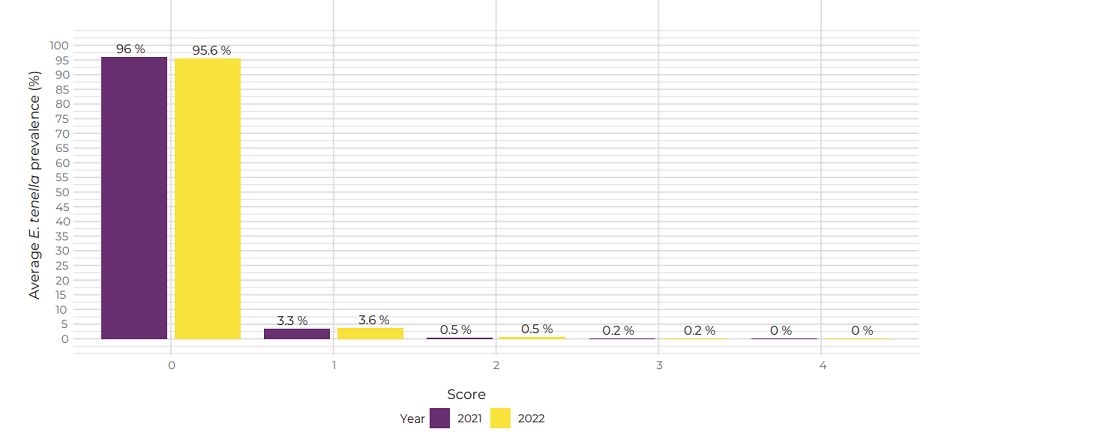
There was a slight increase in mild scores (score = 1) but in general, very few birds scored positive for E. tenella (+/- 5% of all investigated birds were scored for E. tenella).
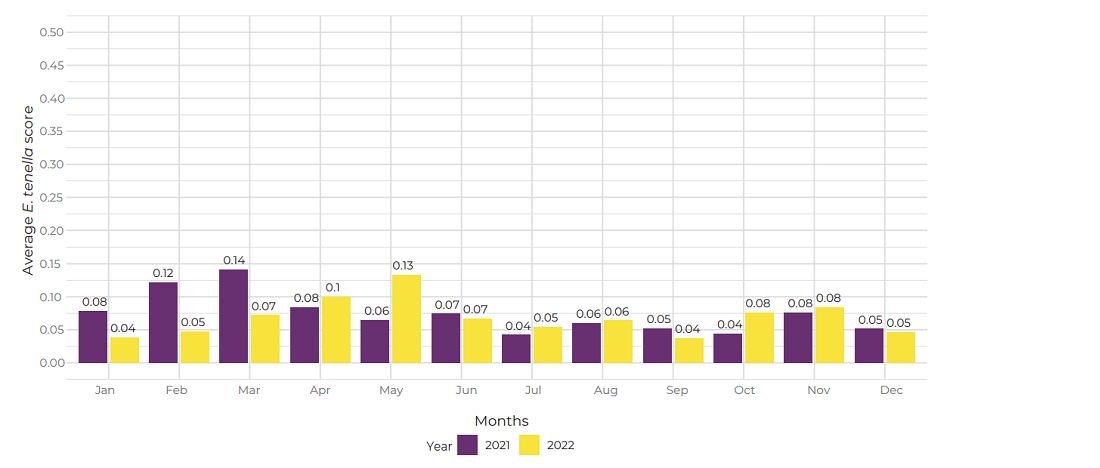
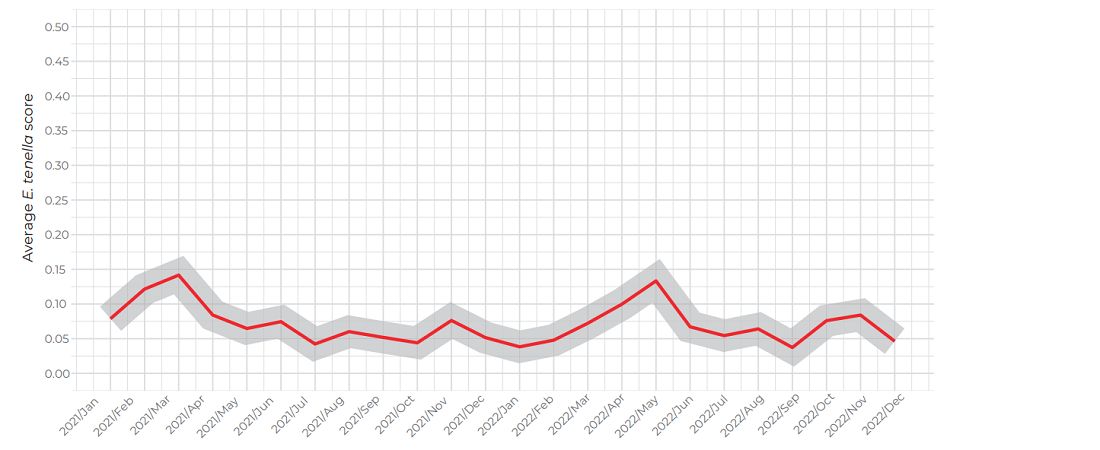
Looking at the trend line over the last 2 years it seems there was more variation, but in fact the scores are very low which makes any small change look more important than the reality. As most birds received a combination product in the starter and grower feed we saw very few E. tenella lesions.
TMLS in Europe
The trends in the total mean lesion score (TMLS), which is the sum of the E. acervulina, E. maxima, and E. tenella scores are provided in Figures 10 and 11.
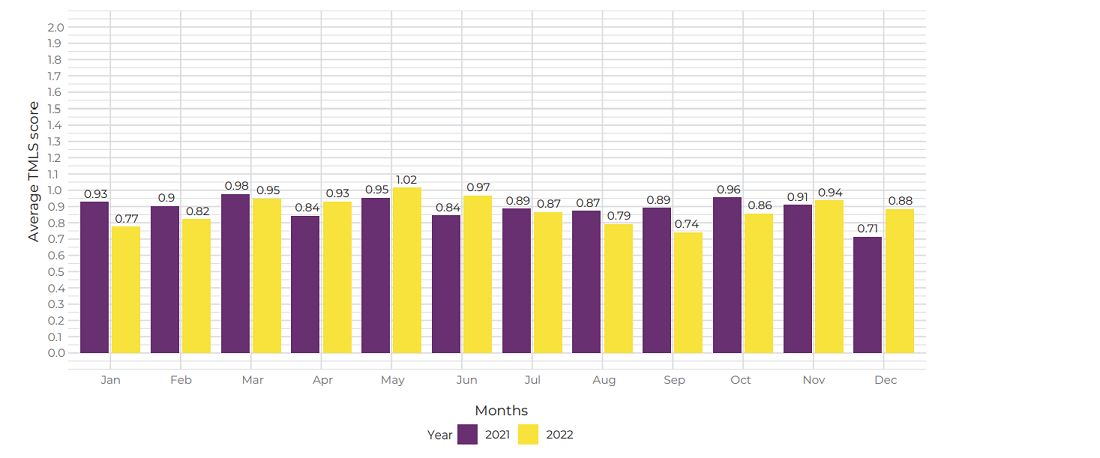
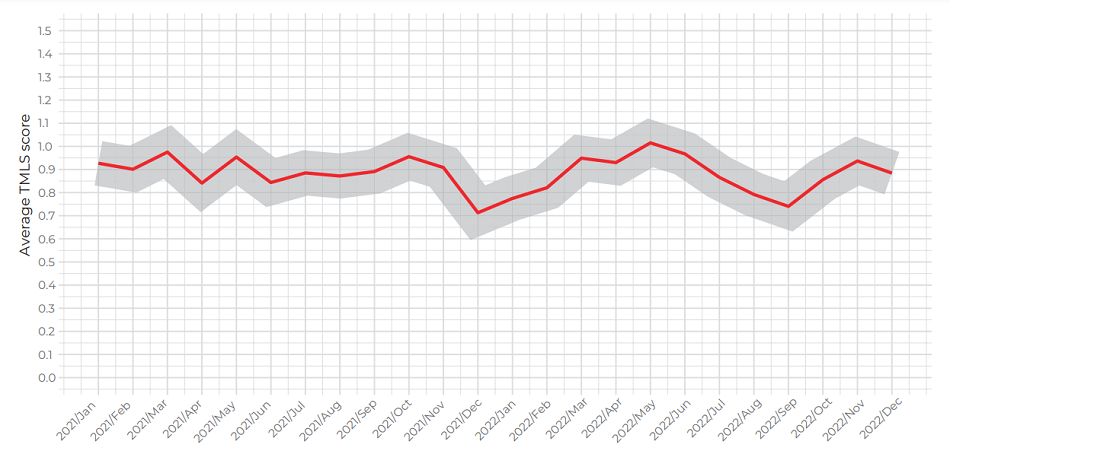
The TMLS showed a steep reduction at the end of 2021 followed by a sharp increase in the first 6 months of 2022. Overall, the trend over the last 2 years was stable with an average TMLS score of 0.89 in 2021 versus 0.88 in 2022. However, the strong reduction seen at the end of 2021 was followed by an increase during 2022 with higher monthly variability compared to 2021.
Dysbacteriosis in Europe
The trends in the dysbacteriosis score, which is the sum of the 10 intestinal health parameters, scaled by a factor of 2.5 to match the range of the coccidiosis scoring system, are provided in Figures 12 and 13.
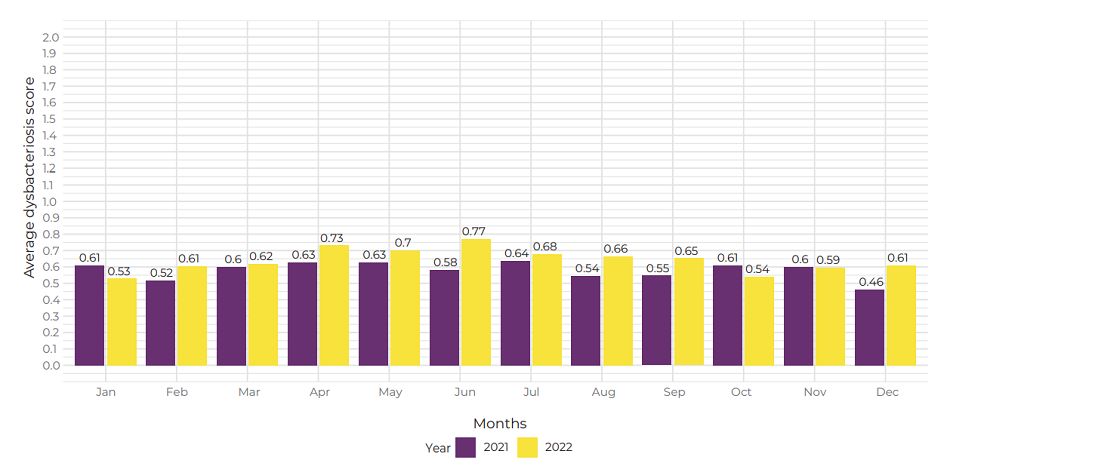
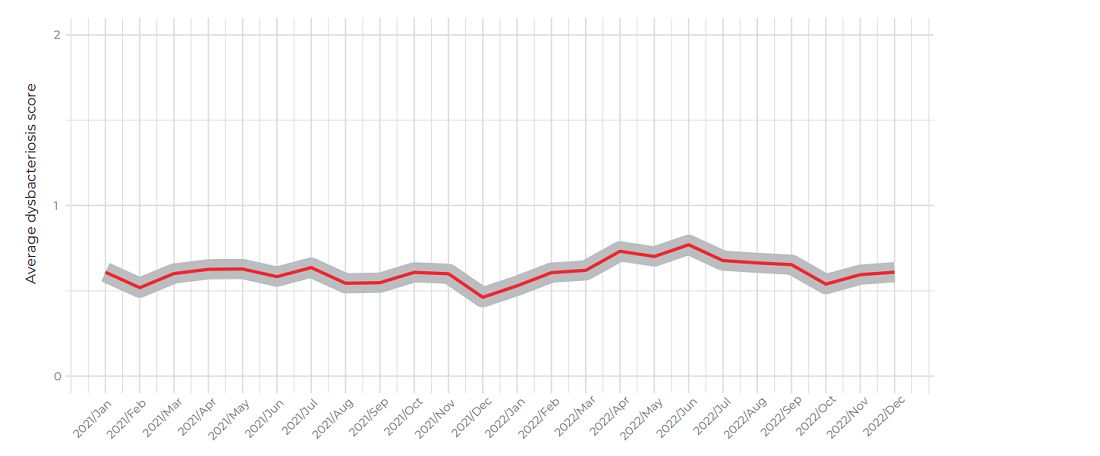
The dysbacteriosis score was stable in 2021 in contrast to 2022 where there was a sharp increase in the first 6 months of 2022. After the peak in June, a slight decrease was noticed. Nevertheless in 2022, the scores were increasing, with an overall higher average score of 0.64 versus 0.58 in 2021, and increased variability in the monthly averages compared to 2021.


